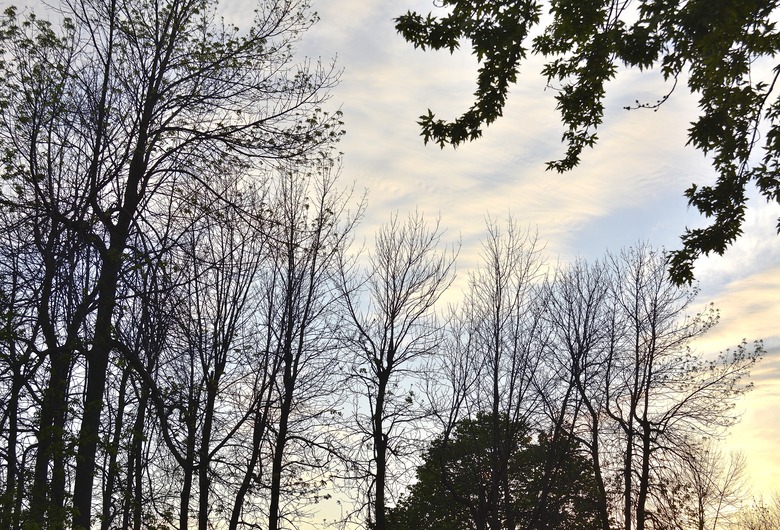Everything You Need To Know About Endangered Trees
Messages about saving endangered animals are everywhere. Perhaps you've seen Leo DiCaprio's documentary on trying to save the remaining 15 vaquita porpoises, or heard Hayden Panettiere's impassioned plea to save the dolphins or taken part in a school fundraiser to help gorilla populations. Maybe you're that person that says "save the whales!" anytime anyone takes a long sip at the water fountain.
But what about trees? Do they get the same endangered status that some of the planet's animals do? Could the tree in your backyard be just as endangered as an elephant thousands of miles away?
You bet it could! There are around 60,000 different types of trees on Earth. Experts estimate that about 10% of them are threatened with extinction, and they're expecting that number to rise when they reevaluate in 2020.
Dying trees don't always illicit the same type of response in people that dying animals do. Animals are cute and sweet, after all, and many wear their emotions right on their face. A cuddly panda who's sad because its mom died is a lot more tear-jerking than some crackly dead tree limbs.
But trees play a vital role in our lives. Across the planet, trees produce oxygen, improve nearby water quality and provide food and shelter for other plants and animals. They also absorb and store carbon, which helps to mitigate the effects of the climate crisis. A single acre of 50-year-old trees can absorb the amount of carbon produced by driving your car for one year.
Long story short, we need trees.
But They’re Dying
But They're Dying
Just like animals, some trees are threatened because of humans. Deforestation, overharvesting and irresponsible logging are all contributing to the decline of trees. But other endangered species can just get sick and die, and it happens more often than you might realize.
One of the most famous American tree tragedies was the blight of the American chestnut. In the early 1900s, American chestnut trees were an important crop. Their sturdy, decay-resistant wood was used to make everything from fences to coffins. The chestnut trade was booming – farmers sold the fruits to people and to other farmers looking to feed livestock with the affordable feed. In some areas of the eastern part of the country, chestnuts accounted for as many as 25% of trees.
But everything changed in 1904, when a chestnut tree from a Japanese nursery accidentally introduced a parasitic fungus to the U.S. stock. Foresters first found it killing the chestnut trees at the Bronx Zoo, and it catapulted from there. By 1940, almost every single chestnut in the U.S. was dead – around 4 billion trees – with just a few surviving in the Midwest and Pacific Northwest. Now, some states have made efforts to plant chestnuts resistant to the blight, but not even close to the rate needed to replace the billions lost.
A more modern blight is happening right now to ash trees. The emerald ash borer (EAB) is a harmful beetle that's already killed hundreds of millions of ash trees around the country. Treatment can help prevent the death, but it requires early identification and an already structurally sound tree.
Other threatened trees in the U.S. include the longleaf pine, Fraser fir and the Florida yew, which some scientists are trying desperately to save.
How Can I Save the Trees?
How Can I Save the Trees?
There's no easy answer to this question, as endangered tree species are threatened in so many different ways around the globe. There are little concrete actions you can take, like learning the signs of EAB and contacting authorities if you see it in your area. There are also bigger steps, like giving your vote to local and federal politicians who value environmental protections and green new deal measures.
But one of the best things you can do is to plant more trees. Check out your town's resources for planting new trees, or see if your teachers have any resources to getting new ones planted at your school or in your neighborhood. Many cities have initiatives to getting trees planted on your street or outside your school. You can also check in with the Arbor Day Foundation to see if you live in city that's part of Tree City, a program that provides the framework for cities to have healthy trees. Googling terms like "tree planting program [city]" or "tree planting initiatives [city]" may help you find other resources in your area.
If you're unable to plant any trees yourself, you can support organizations like One Tree Planted and The Nature Conservancy. They accept donations to plant trees around the world.
There's a saying often attributed to a Chinese proverb: The best time to plant a tree is 20 years ago. But the second best time is now. Get planting.
Cite This Article
MLA
Dragani, Rachelle. "Everything You Need To Know About Endangered Trees" sciencing.com, https://www.sciencing.com/what-are-endangered-trees-13723573/. 16 December 2019.
APA
Dragani, Rachelle. (2019, December 16). Everything You Need To Know About Endangered Trees. sciencing.com. Retrieved from https://www.sciencing.com/what-are-endangered-trees-13723573/
Chicago
Dragani, Rachelle. Everything You Need To Know About Endangered Trees last modified March 24, 2022. https://www.sciencing.com/what-are-endangered-trees-13723573/
